
© Paul Kolnik. (Click image for larger version)
New York City Ballet
Tradition and Innovation: Vespro, Duo Concertant, and Dances at a Gathering
Just for Fun: Carnival of the Animals, Jeu de Cartes, and The Four Seasons
New York, David H. Koch Theater
26 September and 2 October 2013
www.nycballet.com
Serendipity – The art of the Mixed Bill
Every mixed bill has its share of hits and misses – except the “Black and White” all-Balanchine program at New York City Ballet, which is all hits. (It will be performed again Oct. 4, and Oct. 13.) Thematic bills, built around a style or an idea, are easier to sell, but they have a downside too: they diminish the chance we’ll be taken by surprise. I went to New York City Ballet last Thursday (Sept. 26) mainly to catch a piece I’d never seen before, Mauro Bigonzetti’s Vespro – no great shakes, it turned out – but ended up being overcome by Jerome Robbins’ Dances at a Gathering. A favorite ballet, yes, but one that doesn’t always come across with the force it should. With its Chopin mazurkas and nocturnes, its gauzy dresses in pale pastels, it can get a bit wound up in its own nostalgia and begin to drag (it’s an hour long). This time, maybe because it was the ballet’s only performance of the season, the spell took hold from the very first notes and never let go. Such a simple beginning: a man (Joaquín De Luz) walks onstage with his back to the audience and begins to sketch out steps, as if remembering them. Other characters drift through, like ghosts or memories. Robbins was a master of atmosphere. On this night, the dancers created their luminous little world, with the audience invited in as warmly welcomed guests. When it was all over, the crowd didn’t want to let them go.
What made it so? There were some standout performances, notably Tiler Peck as the “girl in pink,” the role originally made for Patricia McBride. I never saw McBride perform it live, but from videos it looks as if Peck has some of McBride’s easy-breeziness and freedom and a way of letting herself be carried along by the crest of the music. But there’s another side of Peck, a kind of avidity. She digs deeply into her pliés, reaching for an inner wellspring of energy that propels her into the next phrase with a whoosh. Watching her dance, we feel a sense of physical enjoyment and release. She surprises us with the way she expands on a long note, or finishes a phrase with her fingers, or throws off a bit of footwork that looks made up on the spot.

© Paul Kolnik. (Click image for larger version)
But truth be told all the performances on this night were fresh and uninhibited. Maria Kowroski was a zany, and rather sad, “woman in green,” trapped in her own mind and unable to connect with the other members of this mild-mannered circle. Joaquín de Luz, still the resident hot shot at NYCB (though Andrew Veyette is not far behind), is perhaps a tad glib as the “boy in brown” – the characters are identified only by the color of their costumes – but he’s got charm to burn, and a forthrightness that peels back the misty-eyed wistfulness of the ballet. Rebecca Krohn was convincingly vulnerable as a young woman (in mauve) discovering the confusion of love. To walk with her friends, or to drift off with her suitor? She can’t quite decide. The piece just rolled along, building its aura and sense of place. By the end, one felt one knew the characters well. The final image, of the dancers peering fearfully into the unknown – war? death? – felt unforced, troubling. The theatre fell eerily silent. And then the applause started and didn’t stop. For once, people didn’t run for the subway.
Bigonzetti’s Vespro turned out to be a disappointment, a rambling piece set to sentimental music by Bruno Moretti (a frequent collaborator) played live onstage. (Mr. Moretti did the honors at the piano, along with a soprano saxophonist and singer.) The piano as stage object plays a major role – the lead man, Andrew Veyette, is always clambering onto it or slamming his hands or feet on its keys in protest. As with Angelin Preljocaj’s new Spectral Evidence, the distribution of activity is choppily divided into ensemble and soloist sections, with little or no interaction between the two. When the soloists dance, the ensemble watches and waits, in a clump behind the piano. Mr. Bigonzetti does not seem to have much time for counterpoint or interplay. One couple (Ashley Bouder and Gonzalo García) is all sharp edges – she takes his hand and slaps her chest with it or moves her arms jerkily. The other (Maria Kowroski and Amar Ramasar) is more stretchy and tangled. Both look miserable. The piece ends with Veyette crouched on the piano, peering toward the wings as the light turns ochre. Ah, the dying of the day. Or is it the birth of new hope? Who knows.
This varied program was completed by a lovely performance of Duo Concertant, with Sterling Hyltin and Robert Fairchild as two dancers set in motion by the onstage pianist (Cameron Grant) and violinist (Kurt Nikkanen) playing Stravinsky. Hyltin adds a touch of girlish sophistication to the piece – as she does to most everything she dances – especially in her pin-point footwork and delicate wrists. By the end of the evening, the formulaic Vespro was long forgotten.
**
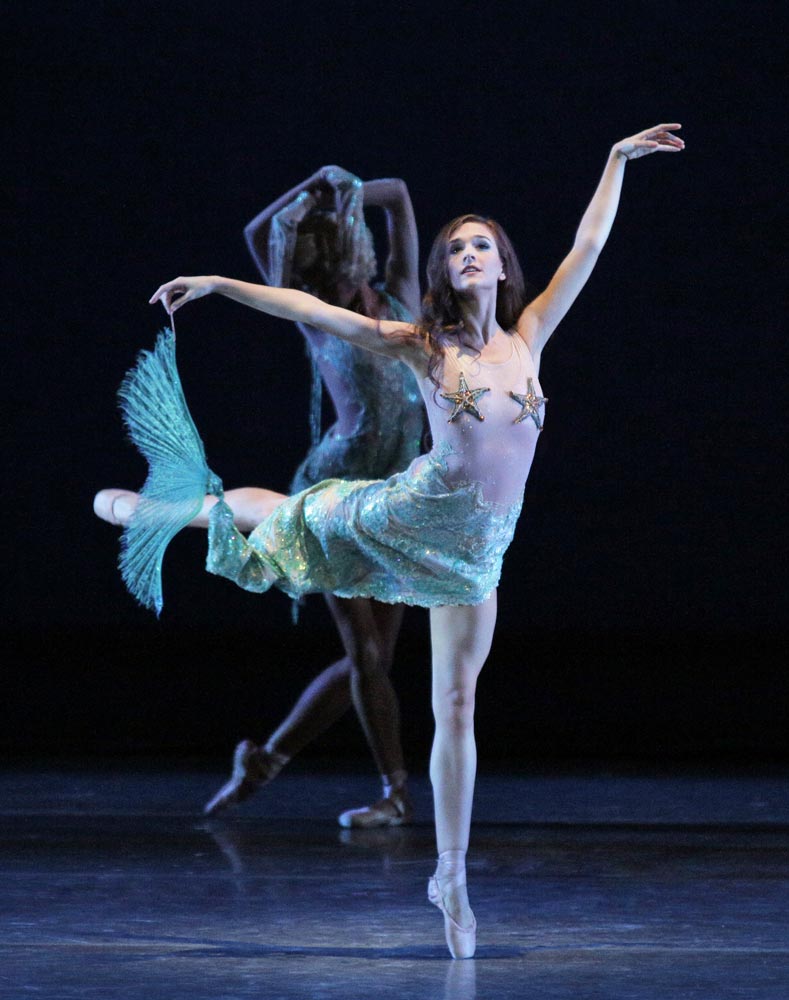
© Paul Kolnik. (Click image for larger version)
October 2nd brought a thematic program, this one under the heading “Just for Fun.” As one might expect, it was made up of lighter ballets from the company’s repertoire: Christopher Wheeldon’s 2003 Carnival of the Animals, Peter Martins’s Jeu de Cartes, and Robbins’ The Four Seasons. None of these are the choreographers’ best, and grouping them together doesn’t help. Wheeldon’s Carnival is set to Saint-Saëns’s suite of animal-themed miniatures; it is being revived after a hiatus of several years. The ballet has touching and clever moments, but the overarching concept is awkward and the dancing is thin. An onstage narrator sets the scene in trite rhymed couplets, written by John Lithgow and performed here by Jack Noseworthy. In Brooklyn-via-Boston tones, the narrator/museum-guard introduces a boy, Oliver, who falls asleep at the Museum of Natural History and dreams that the exhibits come alive. The animals turn out to be versions of people in his life. The lion (danced by Adrian Danchig-Waring), who does a lot of impeccable turns à la seconde, is his teacher. The kangaroo, a master of sparkling petit allegro footwork, is the mousy librarian. But lo and behold! In the following scene, she is magically transformed into a gorgeous mermaid with waist-length hair, propelling herself about the stage with sensual swishing movements. (Both librarian and mermaid were danced with storybook loveliness by Lauren Lovette). The choreography for the school of tropical fish around her, augmented by diaphanous fins, creates a shimmering effect.
The humor in Carnival is reminiscent of Frederick Ashton, while never reaching his level of wit, which was all in the details. The timing is off, and the dancers don’t really get the style. It doesn’t help that, at least on this night, the ballet looked under-rehearsed and messy. But there were charming passages, as when Amar Ramasar (a natural ham) galumphed and cartwheeled across the stage in the pelt of a baboon, arms extended with prosthetics to emphasize his simian gait. A scene set in Oliver’s home (to Saint-Saëns’s plaintive cuckoo music) introduces a touching pas de deux for his parents (Teresa Reichlen and Jonathan Stafford), worried sick about their son. The duet, too, is full of Ashtonian detail, bendings at the waist, fluttering hands, pulsing feet. As is often the case with Wheeldon, the pas de deux is the tender heart of the piece.
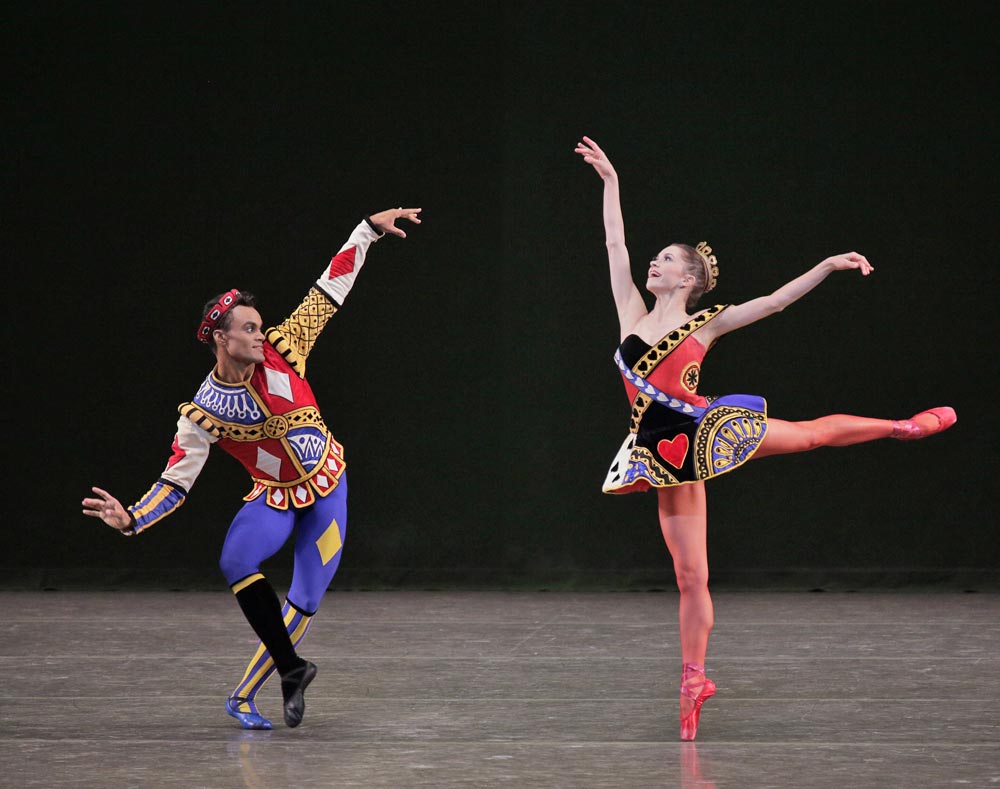
© Paul Kolnik. (Click image for larger version)
Jeu de Cartes, by Peter Martins, is jaunty and busy, a cross between the pas de deux in Balanchine’s Rubies, the trios in Danses Concertantes, and the non-stop action of Martins’ Fearful Symmetries. The music, by Stravinsky, is witty and filled with musical references, especially to Rossini’s Barber of Seville, but it feels strung together, a series of climaxes and finales. There are clever touches, like a swishing feint in which the dancers tease the audience and each other–“will I go this way, or that way?” The stylish black-and-white costumes by Ian Falconer, the illustrator who created the Olivia children’s books, are the high point. The cast – a tirelessly vivacious Megan Fairchild (a début), Joaquín De Luz, Adrian Danchig-Waring (another début), and Taylor Stanley – performed with admirable energy and good humor.
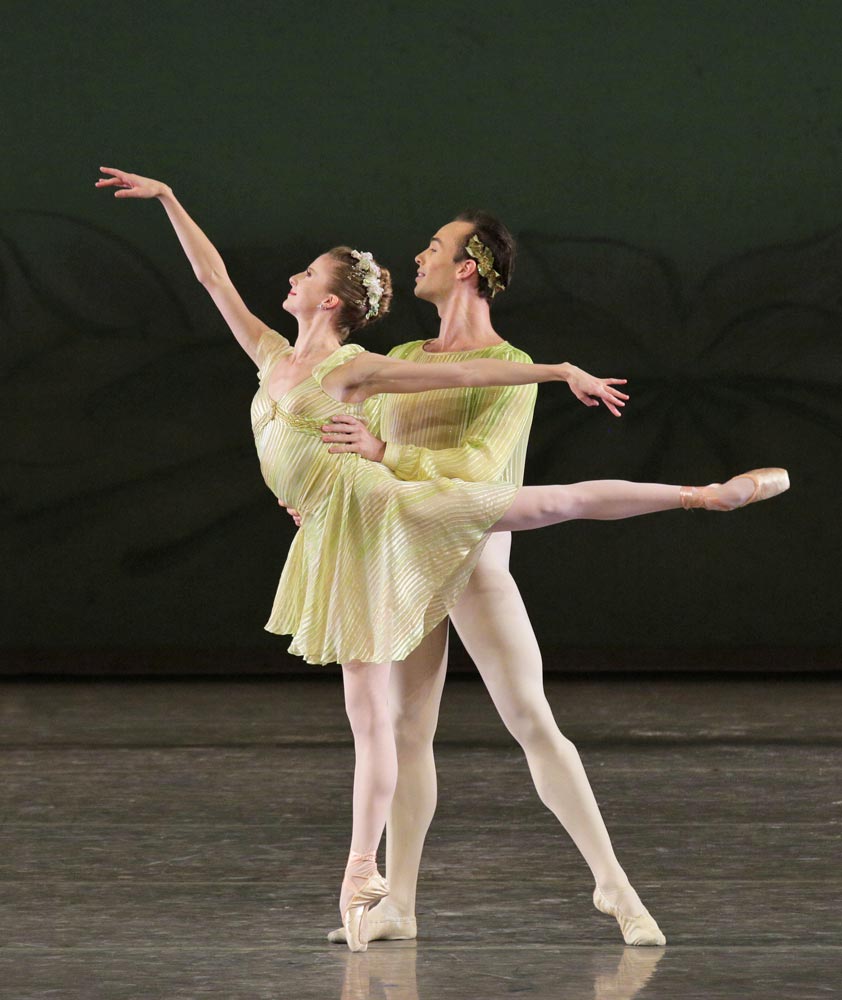
© Paul Kolnik. (Click image for larger version)
I’ll admit it was a relief to relax into Robbins’s Four Seasons, a soufflé of a ballet that nevertheless reveals the choreographer’s rich theatrical imagination, and his way with melody. The music, drawn from various Verdi opera-ballets – mainly Vêpres Siciliennes – is a cornucopia of dance tunes: waltzes, polonaises, a barcarole. A sinuous aria for clarinet sets the stage for an easygoing walking duet for Sterling Hyltin and Tyler Angle. Summer is sultry and exotic, full of come-hither glances and coy, leggy poses that always remind me of Balanchine’s “Arabian” dance in The Nutcracker. Fall is virtuosic and bright, a fact that is hammered home perhaps a bit too insistently by Ashley Bouder with knowing looks and accents that show impressive control and understanding of the music but also interrupt the flow. In any case, Four Seasons is always a pleasure, but more so when paired with meatier fare. Who wants a soufflé after sweets and orange soda? Wouldn’t it be preferable to mix things up a bit?













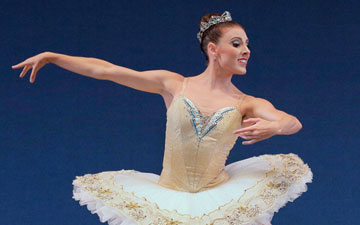
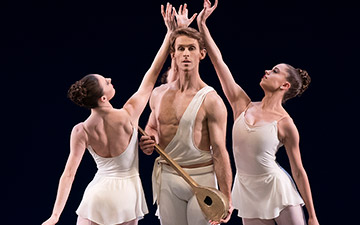
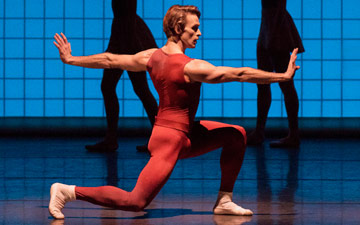

You must be logged in to post a comment.